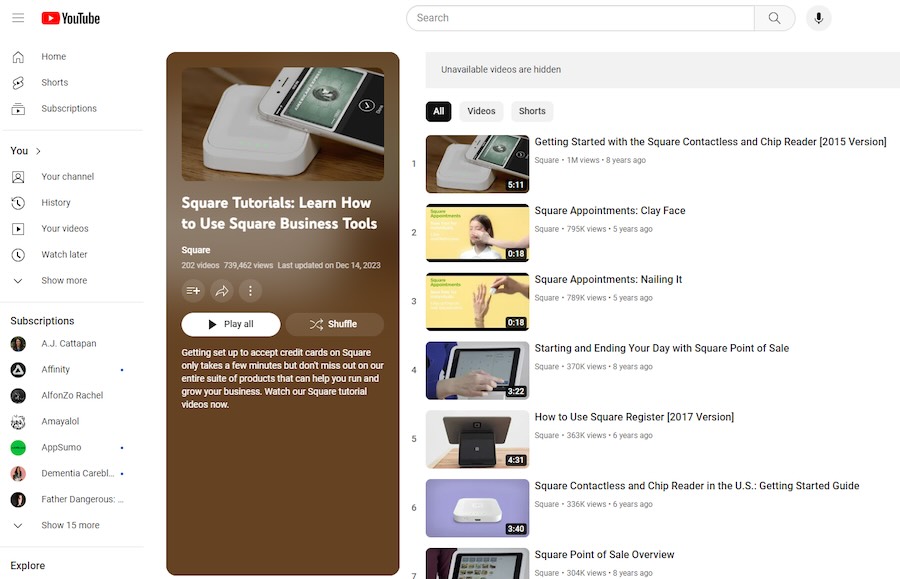Professional development goals are short-term and long-term objectives that help your employee develop the skills, knowledge, and talents needed to advance in their current or future career. Concrete actionable tasks, like taking a course, are ideal development goal ideas. However, a nebulous goal, like learning to defend one’s position without getting angry, is also feasible—as long as it’s broken down into actionable steps.
In this guide, we provide 15 professional development goal ideas that you can use as a jump-off point, as well as some instructions on how to set goals together with your employees.
1. Improve a Specific Skill
Naturally, one of the best ways to move forward in a company is to be exceptionally good at the job you have now. Skill improvement as a development goal can also give a positive spin to negative feedback.
- Suggestions: Reduce errors; improve efficiency (to cut time spent on a task); take an already good skill to the next level
- How to accomplish this: Attend more training or a class/course, take opportunities to practice, receive immediate feedback (gradually reducing this as skills improve) and work on it, or find tools to overcome weaknesses (such as using spelling and grammar checks for correspondence).
- Example: Purchase a basic grammar workbook and complete it with fewer than 20% errors by the end of the quarter. Redo assignments until you have 80% accuracy or more.
Related: Types of Employee Training to Enhance Workforce Skills

Providing opportunities for practice can help employees sharpen their skills. (Source: Pixabay)
2. Go Beyond With Deliverables
This goes hand-in-hand with skills but speaks specifically to results. Again, the purpose is to show your employee as a go-getter willing (and able) to give a little extra to whatever they do.
- Suggestions: Turn in work ahead of deadline; add something extra to an assignment, like more content or a better presentation; suggest alternatives to a plan of action.
- How to accomplish this: This may require extra time or attention, but it can also become a natural result of honing a skill, improving time management, or becoming an industry expert, so this could be a good tandem goal.
- Example: Turn in your next 3 assignments at least two days ahead of schedule.
3. Find a New Challenge in Their Current Job Description
If you have an employee who is ready to prove themself, then helping them find a new challenge that fits in their current role lets them show they are ready for more responsibility without stepping on any co-worker’s toes.
- Suggestions: Managing a new project; taking on a peripheral duty that forwards the company brand (like a charitable activity); job shadowing a mentor; or covering for someone while they are on leave.
- How to accomplish this: This relies on you, the manager, to provide a challenge while being sure they are ready to accept and do well. If you know of a skill they are lacking but want to try, you can help them make up for that by broadening their skillset or partnering with someone else who complements their skills.
- Example: Develop a social media campaign for Widget X that includes five posts and a reel by April 13.

Not all professional goals need to be accomplished alone. Employees can partner with mentors or even someone else wanting to achieve a similar goal. (Source: Pixabay)
4. Broaden Their Skillset
Help employees prepare for greater responsibility or different roles in your company by encouraging them to broaden their skillset. What you suggest depends on what they are interested in doing in the future, but can help them grow in confidence overall as well.
- Suggestions: Learn another language (especially if you have foreign customers or overseas locations); master a new program; or learn a skill from another department or role (like from prep cook to pastry chef).
- How to accomplish this: Attending a class/course, using apps or watching instructional/educational videos, shadowing someone, taking part-time work in another area, or applying for certification courses.
- Example: Get your cake decorator certification in the next two months.
Related: Employee Training Methods (+ Free Plan Template)
5. Learn the Latest Technology
Understanding technology—whether it’s the latest AI trends or how to use the new program your company adopted—always increases a person’s marketability and gives your company a go-to person.
- Suggestions: Learning the uses of AI for the job; getting certified in the company’s HRIS software; or becoming an expert in the department’s inventory program
- How to accomplish this: Taking certifications and online classes, watching webinars or videos by the software provider, and practicing on the software itself (perhaps in a sandbox environment or demo where the student can’t do damage to the company’s data)
- Example: Complete the SAPTEC online course by Aug. 1.

Many software providers offer tutorials on their products, making it inexpensive to become skilled in their use.
(Source: Square on YouTube)
6. Develop Management Skills
Nearly every upward career path runs toward management positions at some point. By encouraging your ambitious employee to develop these skills, you groom them to become the future of your company.
- Suggestions: Learn a specific management skill like problem-solving, delegation, conflict resolution, communication, or project management (see below). Or develop an aptitude required for a specific job position coming open or to fill a knowledge gap specific to management jobs in the company (ex: someone in sales wanting to move up might need to know the marketing side of the business.)
- How to accomplish this: Naturally, classes and mentoring or independent reading, but also practice. Put the employee in charge of a small team for a single project, have them train up a new employee, or put them in charge of the summer intern.
- Example: Take a management class at the local community college this coming semester.
Related: Top People Management Skills
7. Develop Leadership Skills
Leadership skills differ from management skills. When comparing management vs leadership, managers are more focused on progress and keeping things working in the day-to-day, while leaders lean toward the general inspiration and big picture. The best in the business do both, of course.
- Suggestions: Give a motivational speech; speak persuasively about the company values; or convince the team to follow your idea.
- How to accomplish this: Read books on leadership, find a mentor in upper management (or better yet, coordinate monthly lunch-and-learns for the office), attend Toastmasters, offer to present an idea at the next meeting, or seek leadership opportunities in the community
- Example: Read How to Lead When You’re Not in Charge this month and tell me five things you learned from it.
Related: How to Become a Team Leader: Skills & Traits (+ Examples)
8. Improve Teamwork Skills
Teamwork is vital not only for getting the job done but for helping foster good employee experiences.
- Suggestions: Set up a collaboration between teams; speak up for another teammate who has a different opinion from you; join a social group that is project-oriented; and compliment three co-workers this week for something they did.
- How to accomplish this: While books and articles can share teamwork tips, there’s nothing that replaces practical work with feedback.
- Example: Set up a team activity with your department this week where we brainstorm ways to tackle the issue with the Malarky project.

Teamwork is a vital professional development skill. (Source: Pixabay)
9. Learn to Give Great Feedback
You know that giving feedback that’s helpful and actionable without crushing your employee is a difficult skill. Helping your employee learn this before they become a manager or team leader can make their transition easier.
- Suggestions: Learn and practice the art of identifying improvement points and how to deliver it to team members
- How to accomplish this: Read articles, do hypothetical exercises on paper or in person, assign them a subordinate (a trainee or intern) and supervise the feedback session.
- Example: I’ll give you three hypothetical employee problems. Tomorrow, let’s meet and you tell me how you’d discuss it with them.
Related: How to Give Feedback in the Workplace
10. Improve Your Project Management Skills
Project management deals with timelines and tasks more than people, but is nonetheless an important skill not just for managers but for anyone handling a large or complex project. Thus, it can be a great skill for right now as well as your employee’s future career goals.
- Suggestions: Learn the current project management trends; and learn how to use project management software.
- How to accomplish this: Classes, reading, or online videos; software training or how-to articles
- Example: Create a Kanban board for your team’s current project.

Understanding project management can prepare your employee for greater responsibilities or handle more complex projects more easily. (Source: ClickUp)
11. Improve Their Time Management Skills
Time management impacts all aspects of a person’s life. It makes them a more efficient worker, which can reduce stress and improve work/life balance. It also frees up more time for important but non-urgent issues like preparing for their future career.
- Suggestions: Research time management ideas and employ one that resonates; schedule your workweek by tasks and obligations, and tweaking it until it works
- How to accomplish this: Read online articles or books, adopt a time-management software
- Example: Read about the Pomodoro Technique and try it at work for the rest of the month. Use Pomodoro or another timer to help. Report back on whether it helped.
12. Become a Subject Matter Expert
If your employee loves the work they’re doing, encourage them to become a subject matter expert. Whether it’s understanding what makes a great wine or all the ins and outs of hybrid rocket motors, an employee with deep knowledge of their area of expertise can be a great resource for you as well as making them a better candidate for career progression.
- Suggestions: Do deep research into the subject; get an advanced degree; get more certifications; or learn from industry experts.
- How to accomplish this: Classes, readings, attending conferences, independent research, learning from industry experts. If the company can provide financial support for these, all the better.
- Example: Attend next month’s Organic and Ethically Grown Coffees Conference and prepare a short report on three of the seminars that interested you.
13. Learn More About Their Industry (Beyond the Immediate Job)
Some careers depend on the employee diving deep into the subject; others require that you expand your knowledge in order to progress. Regardless, learning more about the industry helps them understand how their current contributions affect the whole, which can improve their motivation and feeling of belonging in the company.
- Suggestions: Learn other departments; get mentored by upper management; learn about the industry as a whole; or read about how the industry is changing
- How to accomplish this: Trade magazines and journals, survey courses, mentorship, spending time in other departments
- Example: I’ll arrange for you to meet with all the department heads for a tour of their section. Ask each about their pain points, prospects, and how your department affects their work.

Understanding your industry, such as running a restaurant vs cooking, can help you grow professionally. (Source: Pixabay)
14. Improve Communication Skills
Communication is central to any job, and the better a communicator your employee is, the more effective they are at work. Communication covers everything from being able to write a clear business email to being able to defend or explain one’s position in a meeting.
- Suggestions: Learn public speaking; improve writing skills; learn how to write certain documents; run a meeting; or explain your position to someone.
- How to accomplish this: Writing or speaking classes, and groups like Toastmasters, provide opportunities to practice
- Example: Study the quarterly report format and write the one for your team’s project this quarter. Show it to me for suggestions before turning it in.
15. Build Their Network
Sometimes, it’s not what you know, but who you know that helps you get ahead. Even more, though, building a network gives your employee more options for asking advice, seeking help, mentoring, or bouncing ideas off.
- Suggestions: Join professional groups; meet peers in other departments; and find forums or online communities in the industry
- How to accomplish this: Have a list of local and online groups ready to suggest to them.
- Example: Attend this month’s SBA get-together at the Chamber of Commerce building and meet five people you don’t already know.
How to Set Professional Development Goals
A 2022 LinkedIn study showed that around the world, workers are growing less confident in their prospects for career advancement. As a manager, part of employee management means helping employees set and achieve their professional goals. To do so, you must work with the employee to construct goals that they are motivated to achieve.
Here’s a quick approach to setting professional development goals.
- Brainstorm professional goal ideas: Start with the employee’s weak spots and look into what they need in order to progress in their career. What can they do to improve? Then, look at their interests and strengths and consider what will take them to the next level.
- Create both long-term and short-term goals: Long-term goals are more aspirational, for instance, “become the next Senior Engineer in charge of a project.” Short-term goals, on the other hand, are more immediate and can support the long-term goal, like “get advice from the current project leaders,” “talk to Development to see what projects are under consideration,” or “take a project management course.”
- Make your goals SMART: Once you have some developmental goal ideas, pick a couple of the most interesting or promising, and apply the SMART goal-setting framework:
- Specific: Rather than “Network more,” try “Meet three peers in my field outside the office.”
- Measurable: Rather than “Make cleaner code” try “Reduce errors by 20%”
- Achievable: Goals should not be too hard to get done in a timely manner; break them down if needed. Also, be sure to start where your employee is.
- Relevant: Whatever goals are chosen should relate to the current job or aspiration. Employees need to understand the “why” of the goal.
- Time-Bound: Set a reasonable deadline for each goal.
Check our guide to SMART goals examples for inspiration—we even provide a template to ease your SMART goal creation process.
- Provide tools to achieve the goals: The best companies provide help for their employees in terms of training, mentoring, tuition assistance, or even special projects that can help an employee develop a new skill while bringing value to the company. You can also suggest outside services, like Toastmasters, community events, online webinars, or professional organizations.
- Write the goals down: Having the goals written makes them easier to remember and follow up on.
- Follow-up: Set dates for progress check-ins, and let your employee know they can come to you if they have questions or problems achieving their goals.
When should you set goals? While your regularly scheduled feedback and coaching sessions are a good time to approach this, you can also set a session simply for goal setting. For instance, if you have an employee who needs help or shows great promise, then make the time to talk to them about their future and what they need to do to achieve their professional dreams.
Why Set Professional Development Goals?
An important part of employee wellness, engagement, and retention means encouraging professional development. According to Zippia, 58% of workers say professional development contributes to their job satisfaction. Satisfied employees are more engaged and do better work, believe in the company mission, and are more likely to recommend their company as a good place to work.
Plus, it helps employee retention. Per the Zippia study, 45% of workers would stay with their company longer if it invested in their professional development. After increasing pay and improving work/life balance, companies are putting more attention into learning and development, and that includes helping employees achieve their goals for professional development.

When managers provide career counseling, it helps employees feel more engaged in the company. (Source: Pixabay)
Professional Development Goals Frequently Asked Questions (FAQs)
Say you have an employee whose writing skills are holding him back. Together you may set a goal of taking a basic writing class (if grammar and sentence construction are the problem), or of studying and mimicking specific report structures that he isn’t doing well.
Scroll up for more professional development goals examples.
These are opportunities that help your employees meet their goals for professional development. Some examples include:
- Courses or webinars
- Certifications
- Mentoring or shadowing
- Training
- Networking events
- Special assignments geared toward developing new skills or showing one’s readiness for a higher position in the company
SMART stands for Specific, Measurable, Achievable, Relevant, and Time-Bound. So a SMART goal for professional development might be to complete a management course at the community college with a passing grade by the end of the year.
If your employee cannot answer this question easily, there are ways to help guide them to their own answers. Ask them about their overall career goals: where do they see themselves in five years? In 20? Suggest opportunities that can help them on this path and ask which resonate with them. From there, you can work on some short-term and long-term professional development goals for work.
Bottom Line
Helping your employees further their careers with a professional development goal for work not only enhances their employee experience but also helps your company. Your subordinates grow in confidence, knowledge, and skill, giving you a better pool for promotions or filling other positions in-house. The aforementioned 15 professional development goal ideas cover the most crucial areas of career development, but follow the interests of your employee as together you build their future.